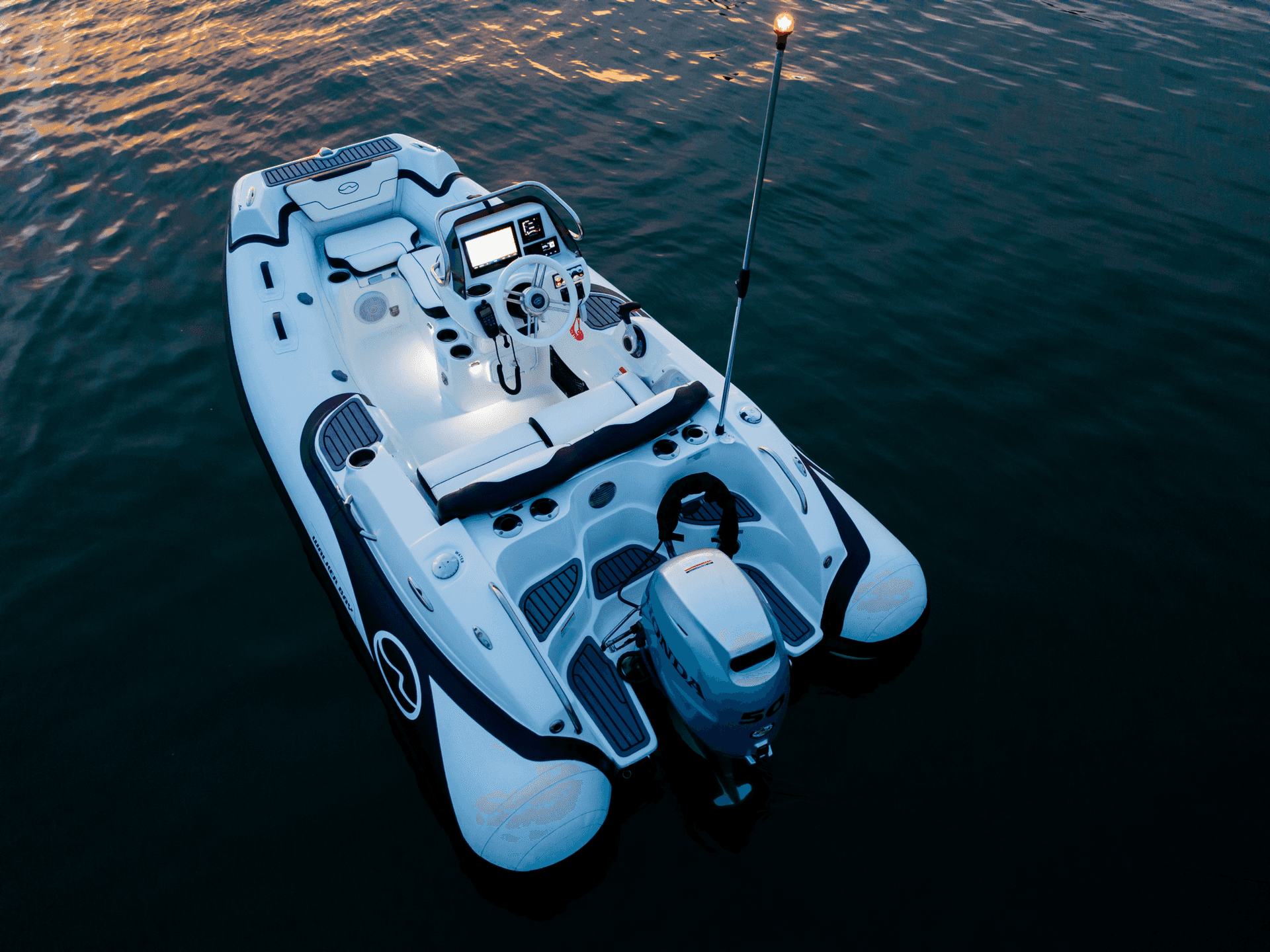Ideal Conditions for Repair
- Humidity max 60%.
- Temperature range between 18 and 25 degrees Celsius.
- Repairs should not be carried out in direct sunlight, wind or rain.
- Repairs should be undertaken in a well ventilated area.
Please Note: Before applying adhesive, it is important to use the correct PVC or Hypalon solvent to prepare the surfaces to be adhered.
Caution: Solvents and adhesives may be flammable and precautions should be taken before use. Work in a a well ventilated area with no open flames.
Hypalon Repair
- Walker Bay Boats that have tubes constructed with “Orca” Hypalon coated fabrics cannot be bonded with plastic adhesives or by welding. Only the special adhesives supplied and the following procedures must be used if repairs are to carried out successfully.
- Only use the enclosed adhesive and recommended solvent and catalyst. (In this case MEK solvent is recommended)
- Identify the area to be patched. This can be done by running water over the suspect area or spraying or brushing with soapy water.
- If the hole is only small, cut out a round patch of no less than 60mm diameter. Larger holes or cuts will require proportionately larger patches but always ensure you have at least 30mm of patch around the cut or hole and the corners are well radiuses.
- Next hold the patch on the tube and mark out around it.
- Using a grinder, course sand paper or scratch stone, rough up both the back of the patch and the area marked on the tube.
- Clean both surfaces with solvent and spread a thin layer of adhesive over them ensuring there are no lumps.
- When the first coat is dry to the touch (about 10 to 15 minutes) apply a second thin coat. After waiting 5 or 6 minutes, touch the adhesive with the back of your hand. If it no longer appears wet, heat both areas with a hot air gun to re-activate the glue and join the patch to the tube and then clamp or roll the surfaces together. For the best adhesion, roll over the patch with a 3/16th width roller or over the bottom edge of a bottle.
- Do not inflate the boat fully for 24 hours.
- For large tears or cuts a two part neoprene adhesive should be used and is best applied by a professional repairer.
PVC Repair
- Identify the area to be patched. This can be done by running water over the suspect area or spraying or brushing with detergent in water.
- If the hole is only small, cut out a round patch of no less than 60mm diameter. Larger holes or cuts will require proportionately larger patches but always ensure you have at least 30mm of patch around the perimeter of the cut or hole and the corners are well radiuses.
- Next hold the patch on the tube and mark out around it.
- Clean both surfaces with solvent and spread a thin layer of adhesive over them.
- When the first coat is dry to the touch (about 10 to 15 minutes) apply a second thin coat. After waiting 5 or 6 minutes, touch the adhesive with the back of your hand. If it no longer appears wet, heat both areas with a hot air gun to re-activate the glue and join the patch to the tube and then clamp or roll the surfaces together. For the best adhesion, roll over the patch with a 3/16th width roller or over the bottom edge of a bottle.
- Do not inflate the boat fully for 24 hours.
- For large tears or cuts a polyurethane adhesive should be used and is best applied by a professional repairer.

